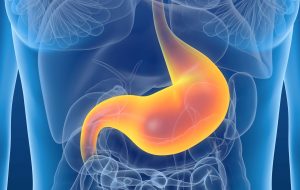Choosing between a vegetarian and a pescatarian diet often hinges on personal health goals, ethical considerations, and lifestyle preferences. At their core, both diets focus primarily on plant-based foods, but they differ in their approach to animal-based foods. Let’s delve deeper into these dietary choices, explore their benefits and challenges, and provide actionable advice for those considering a transition. Understanding Vegetarian and Pescatarian Diets A vegetarian diet excludes meat, poultry, and seafood, focusing on vegetables, fruits, grains, legumes, nuts, and seeds. Within vegetarianism, there are several subcategories:
- Lacto-vegetarian: Includes dairy products.
- Ovo-vegetarian: Includes eggs.
- Lacto-ovo-vegetarian: Includes both dairy and eggs.
On the other hand, a pescatarian diet is more flexible, incorporating fish and other seafood along with plant-based foods. This inclusion of seafood offers additional protein sources and essential nutrients such as omega-3 fatty acids, which are vital for heart and brain health.
Exploring the Subcategories in Detail
Lacto-Vegetarian
Lacto-vegetarians consume dairy products but avoid eggs. This choice can be motivated by cultural or religious beliefs, such as those in some Indian traditions. Dairy provides an excellent source of calcium and vitamin D, which are essential for bone health.
Practical Tip: Lacto-vegetarians can enhance their diet by incorporating fermented dairy products like yogurt or kefir, which are beneficial for gut health.
Ovo-Vegetarian
Ovo-vegetarians include eggs in their diet, offering a rich source of protein, B vitamins, and essential amino acids. Eggs are versatile and can be included in various meals, from breakfast scrambles to baking.
Practical Tip: Experiment with different ways to prepare eggs, such as poaching, scrambling, or making omelets, to keep meals interesting.
Lacto-Ovo-Vegetarian
This is the most common form of vegetarianism, allowing both dairy and eggs. It offers a broader range of options for obtaining essential nutrients like vitamin B12, which is otherwise challenging to source from plant foods alone.
Example: A lacto-ovo-vegetarian might enjoy a breakfast of oatmeal topped with yogurt and berries, a lunch of vegetable stir-fry with tofu, and a dinner of eggplant parmesan.
The Nutritional Landscape
Protein and Nutrient Intake
One common concern with vegetarian diets is ensuring adequate protein intake. While plant-based foods like beans, lentils, tofu, and quinoa are excellent protein sources, they may require careful meal planning to meet daily needs, especially for athletes or those with higher protein requirements. Pescatarians, by including fish and seafood, often find it easier to meet protein requirements. Seafood not only provides high-quality protein but also essential nutrients like vitamin D and iodine, which can be challenging to obtain from plant sources alone.
Practical Tip: For vegetarians, combining different plant protein sources can create a complete amino acid profile. For example, pairing rice with beans or hummus with whole grain pita can ensure you’re getting all essential amino acids.
Omega-3 Fatty Acids
Omega-3s are crucial for reducing inflammation, supporting heart health, and maintaining cognitive function. While vegetarians can obtain omega-3s from flaxseeds, chia seeds, and walnuts, these foods provide ALA (alpha-linolenic acid), a form that the body must convert to the more beneficial EPA and DHA forms found in fish. Pescatarians have a direct source of EPA and DHA through fish like salmon, mackerel, and sardines, making it easier to meet recommended omega-3 intake.
Practical Tip: Vegetarians might consider algae-based supplements to directly obtain EPA and DHA without consuming fish.
Vitamins and Minerals
Vitamin B12
Vitamin B12 is vital for nerve function and the production of DNA and red blood cells. Since it is primarily found in animal products, vegetarians, especially vegans, need to be mindful of their B12 intake.
Practical Tip: Fortified cereals and plant milks, nutritional yeast, and B12 supplements can help vegetarians meet their needs.
Iron
Iron is necessary for producing hemoglobin, which carries oxygen in the blood. Plant-based iron (non-heme iron) is not as readily absorbed by the body as heme iron from animal products.
Practical Tip: Combine iron-rich plant foods like lentils and spinach with vitamin C-rich foods like oranges and bell peppers to enhance absorption.
Calcium
Calcium is crucial for bone health, and while dairy is a common source, vegetarians can also obtain calcium from fortified plant milks, tofu, and leafy greens.
Practical Tip: Incorporate a variety of calcium-rich foods daily, especially if avoiding dairy.
Health Benefits and Considerations
Both diets offer significant health benefits, often attributed to their emphasis on plant-based foods, which are rich in fiber, vitamins, and antioxidants. Studies have shown that both vegetarians and pescatarians tend to have lower risks of developing heart disease, high blood pressure, and certain cancers.
Heart Health
The reduced intake of saturated fats and cholesterol, common in both diets, supports cardiovascular health. The added omega-3s in a pescatarian diet further enhance this benefit by lowering triglyceride levels and reducing blood pressure.
Example: A case study involving a 55-year-old male with a family history of heart disease found significant improvement in cholesterol levels and blood pressure after transitioning to a pescatarian diet, complemented by regular exercise.
Weight Management
Due to their high fiber content and lower calorie density, both vegetarian and pescatarian diets can aid weight management efforts. The emphasis on whole foods helps promote satiety, reducing the likelihood of overeating.
Practical Tip: Incorporate a variety of colorful vegetables and fruits into your meals to ensure a wide range of nutrients and keep meals exciting and satisfying.
Digestive Health
Plant-based diets are high in dietary fiber, which supports a healthy digestive system by promoting regular bowel movements and fostering beneficial gut bacteria.
Practical Tip: Aim to include both soluble and insoluble fiber in your diet. Soluble fiber, found in oats and fruits, helps regulate blood sugar levels, while insoluble fiber, found in whole grains and vegetables, aids in digestion.
Ethical and Environmental Considerations
For many, the choice between vegetarian and pescatarian diets is influenced by ethical and environmental concerns.
Ethical Concerns
Vegetarians often choose their diet to avoid contributing to the harm and exploitation of animals. This ethical stance can extend to avoiding products like leather and choosing cruelty-free brands. Pescatarians may share these concerns but choose to include seafood for personal health reasons. Many opt for sustainably sourced or wild-caught seafood to mitigate ethical concerns related to overfishing and habitat destruction.
Practical Tip: When purchasing seafood, look for certifications like the Marine Stewardship Council (MSC) label, which indicates sustainable fishing practices.
Environmental Impact
Both diets generally have a lower environmental footprint compared to diets high in red meat. The production of plant-based foods typically requires less water and land and results in fewer greenhouse gas emissions.
Example: A study comparing the carbon footprints of different diets found that vegetarian and pescatarian diets significantly reduced emissions compared to meat-heavy diets, contributing to efforts against climate change.
Transitioning to a New Diet
Switching to a vegetarian or pescatarian diet can be a rewarding journey, but it may require some adjustments and planning.
Gradual Transition
For those accustomed to a meat-heavy diet, transitioning gradually can make the change more manageable. Start by designating one or two meat-free days per week, then gradually increase the frequency as you discover new recipes and foods you enjoy.
Practical Tip: Explore meat alternatives like tempeh, seitan, or jackfruit to replace meat in your favorite dishes without sacrificing flavor or texture.
Cooking and Meal Planning
Experimenting with new recipes and ingredients can make the transition exciting rather than daunting. Consider investing in a good vegetarian or pescatarian cookbook or exploring online resources to find inspiration.
Practical Tip: Batch cooking and meal prepping can save time during busy weeks and help avoid the temptation of convenience foods that might not align with your dietary goals.
Social and Cultural Considerations
Dietary choices can impact social interactions and cultural practices, especially in settings where meat is a central part of meals.
Navigating Social Situations
Communicating your dietary preferences in advance can ease social gatherings. Offering to bring a dish to share can ensure you have something to eat and introduce others to delicious vegetarian or pescatarian options.
Example: A pescatarian attending a barbecue might bring a marinated vegetable and shrimp skewer dish, showcasing how seafood can complement traditional grilled foods.
Cultural Adaptation
If you come from a culture where meat is a staple, adapting traditional recipes to fit your diet can maintain cultural connections while aligning with your dietary choices.
Practical Tip: Substitute meat with plant-based proteins like tofu or chickpeas in traditional stews or curries to retain familiar flavors.
Common Mistakes and How to Avoid Them
As with any diet, there are pitfalls to watch out for.
Over-reliance on Processed Foods
It’s easy to fall into the trap of relying on processed vegetarian or pescatarian convenience foods, which can be high in sodium and unhealthy fats.
Practical Tip: Focus on whole, unprocessed foods and use convenience items sparingly. When choosing packaged foods, read labels carefully and opt for options with recognizable ingredients.
Nutrient Deficiencies
Both diets can lead to nutrient deficiencies if not carefully managed. Vegetarians, in particular, should monitor their intake of vitamin B12, iron, and calcium, which are less abundant in plant foods.
Practical Tip: Consider taking a multivitamin or specific supplements after consulting with a healthcare provider to ensure you’re meeting your nutritional needs.
Boredom and Lack of Variety
Eating the same types of meals repeatedly can lead to boredom and a lack of enthusiasm for maintaining a vegetarian or pescatarian diet.
Practical Tip: Regularly introduce new recipes, explore different cuisines, and try new foods to keep your diet varied and exciting.
Dining Out
Eating out can be challenging when your dietary options are limited.
Practical Tip: Research restaurant menus in advance and identify places that offer a range of vegetarian or pescatarian options. Don’t hesitate to ask for modifications to suit your dietary needs.
Conclusion
While both vegetarian and pescatarian diets offer numerous health benefits and align with ethical and environmental considerations, the choice ultimately depends on individual preferences and values. By understanding the nutritional needs, planning meals carefully, and considering social and cultural contexts, you can successfully thrive on either diet. Whether you choose to embrace the complete plant-based lifestyle or include seafood for its nutritional advantages, the key is to make informed decisions that support your health and well-being.




